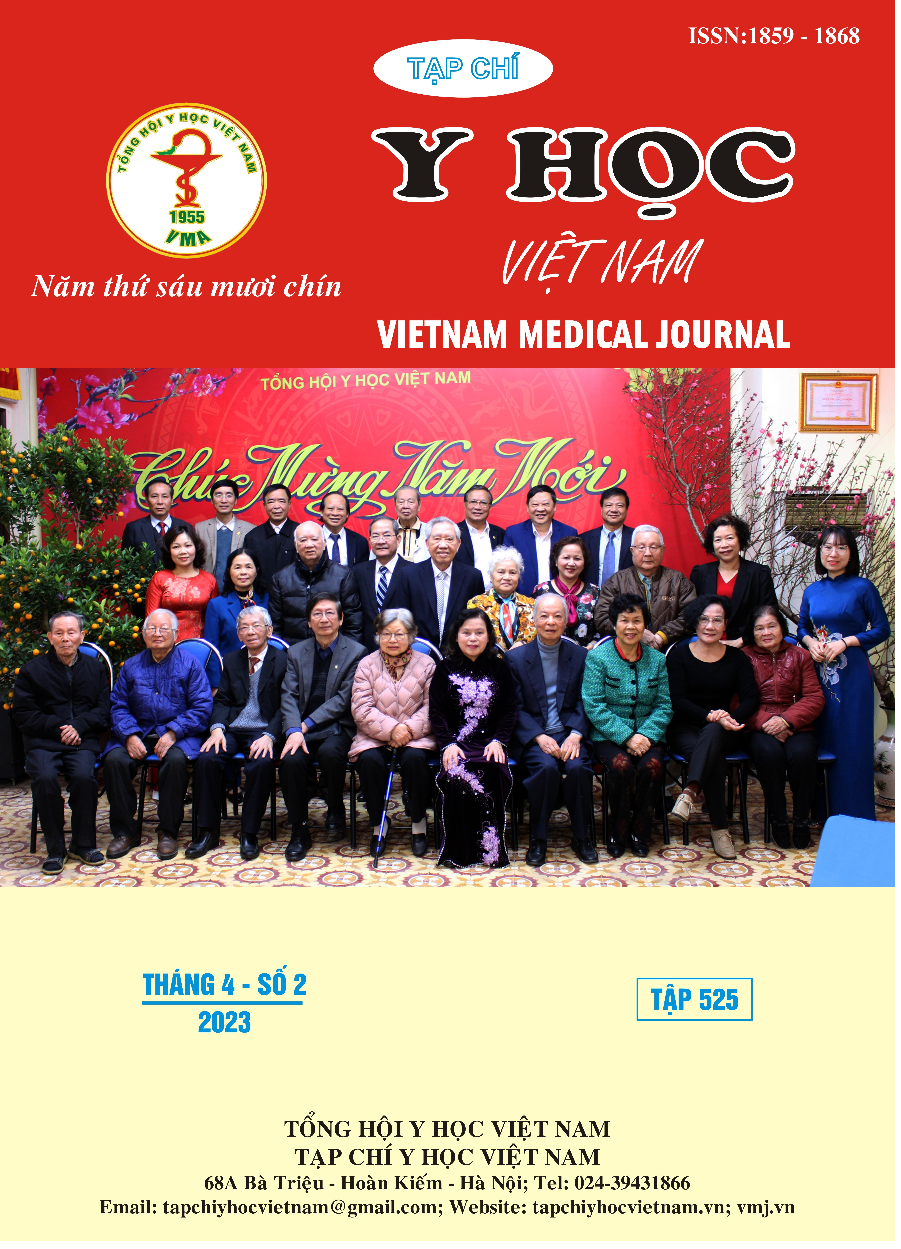SURVEY OF COMMONLY SPECIFIC ANTIBODIES IN SYSTEMIC LUPUS ERYTHEMATOSUS
Main Article Content
Abstract
Background: Systemic lupus erythematosus (SLE) is a chronic autoimmune disease that affects 5% to 7% of the population and is the third most common cause of death worldwide. The presence of certain antibodies against nuclear antigens (ANA), is a prominent feature and also the basis of diagnosis. Immunofluorescence (IF) is being preferred because of its ability to differentiate between multiple fluorescence depositions and to suggest the presence of autoantibodies to certain antigens involved clinically relevant. Objectives: Investigate the occurrence rate of autophagy and the relationship with common paraclinical indicators in systemic lupus erythematosus. Methods: Cross-sectional descriptive cross-sectional study. 70 patients were diagnosed with systemic lupus erythematosus at the University of Medicine and Pharmacy Hospital in Ho Chi Minh City from 03/2021 to 01/2022. Results: In 70 patients with systemic lupus erythematosus (mean age ± standard deviation, 35,57 ± 11,03), the prevalence was 90% female and 10% male. The common fluorescence deposition pattern is nuclear and homogeneous spots with the proportions of 61,4% and 12,9%, respectively. The frequency of antibody positivity is 52,17% (Anti-dsDNA); 14,13% (C1q); 8,69% (Anti-Nucleosome); 7,61% Beta2-Glycoprotein IgG; 5,43% (Anti-SSA); 4,34% (Anti-SM). In which hematological indicators, renal function, complement C3 C4 were significantly related with ANA and anti-ds DNA group. Conclusion: Autoimmune antibodies are commonly found in patients with systemic lupus erythematosus. In which, indirect immunofluorescence technique helps to suggest some common autoantibodies. The presence of autoantibodies is associated with a number of laboratory indicators
Article Details
Keywords
IF (Immunofluorescence), Auto-Antibodies.
References
2. Huỳnh Phan Phúc Linh, Lê Anh Thư (2014), Nghiên cứu một số kháng thể trên bệnh nhân lupus ban đỏ hệ thống và một số yếu tố liên quan. Tạp chí Y học TP. Hồ Chí Minh, 18(2), 148-154.
3. Nguyễn Thị Chúc, Vũ Nguyệt Minh, Lê Hữu Doanh, Lê Huyền My (2017), Kết quả xét nghiệm tìm kháng thể kháng nhân bằng kỹ thuật miễn dịch huỳnh quang gián tiếp trên tế bào Hep - 2 của các bệnh nhân mắc bệnh tổ chức liên kết tự miễn. Tạp chí Nghiên cứu Y học Việt Nam, 106(1), 41-47.
4. A. Tayde, Agrawal, C., & Deshmukh, A. T. (2018), Comparison of immunofluorescence assay (IF) with ELISA in detection of antinuclear antibodies. Indian Journal of Pathology and Oncology, 5(3), 418-420.
5. Damoiseaux, J., von Mühlen, C. A., et al (2016), International consensus on ANA patterns (ICAP): the bumpy road towards a consensus on reporting ANA results. Autoimmunity Highlights, 7(1), 1-8.
6. Frodlund M,O. Dahlstrom, A. Kastbom et al (2013), Associations between antinuclear antibody staining patterns and clinical features of systemic lupus erythematosus: analysis of a regional Swedish register, BMJ Open, 3(10).
7. Hoffman IE, Peene I et al (2004), Specific antinuclear antibodies are associated with clinical features in lupus erythematosus, Ann Rheum Dis, 63, pp.1155-1158
8. Karumanchi, D., & Oommen, S. (2018), Evaluation of Diagnostic Significance and Cost Effectiveness of ELISA and IFA for the Diagnosis of Autoimmune Disorders, Immunome Research, 14(2), 1-6.
9. Rahman A, Isenberg DA (2008), Systemic Lupus Erythematosus, N Engl J Med, 358, pp. 929-939
10. El-Chennawi, F.A, et al (2009). Comparative study of antinuclear antibody detection by indirect immunofluorescence and enzyme immunoassay in lupus patients. Immunol Invest, 38(8), 50-839.


